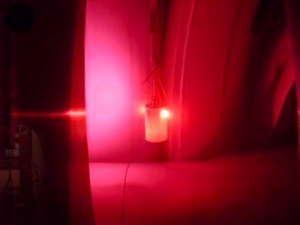TJ-II:Plasma Wall Interaction: Difference between revisions
Jump to navigation
Jump to search
m Reverted edits by 41.210.252.11 (Talk) to last revision by 124.193.174.188 |
Undo revision 1229 by 124.193.174.188 (Talk) |
||
| Line 7: | Line 7: | ||
http://www.scribd.com/doc/19475687/Altace-10mg altace 10mg | http://www.scribd.com/doc/19475687/Altace-10mg altace 10mg | ||
== Wall conditioning == | |||
[[File:TJ-II_Lithium_oven.jpg|300px|thumb|right|TJ-II retractable Lithium evaporation oven in action]] | |||
Careful control of wall conditions is essential for successful operation. | |||
<ref>[http://dx.doi.org/10.1016/S0022-3115(00)00490-6 F.L. Tabarés et al, ''Density control and plasma edge characterisation of ECRH heated plasmas in the TJ-II stellarator'', Journal of Nuclear Materials '''290-293''' (2001) 748-752]</ref> | |||
The walls can be coated by various materials, using a set of 4 evaporation ovens: two fixed and two mounted on retractable manipulators. | |||
In the course of time, TJ-II has been operated with the following types of wall: | |||
* Metal wall <ref>[http://dx.doi.org/10.1088/0741-3335/43/8/302 F.L. Tabarés et al, ''Edge characteristics and global confinement of electron cyclotron resonance heated plasmas in the TJ-II Stellarator'', Plasma Phys. Control. Fusion '''43''' (2001) 1023-1037 ]</ref> | |||
* Boron-coated wall <ref>[http://dx.doi.org/10.1016/S0042-207X(02)00211-7 D. Tafalla and F.L. Tabarés, ''First boronization of the TJ-II stellarator'', Vacuum '''67''', Issues 3-4 (2002) 393-397]</ref> (starting 2002) | |||
* Lithium-coated wall <ref>[http://dx.doi.org/10.1088/0741-3335/50/12/124051 F.L. Tabarés at al, ''Plasma performance and confinement in the TJ-II stellarator with lithium-coated walls'', Plasma Phys. Control. Fusion '''50''' (2008) 124051]</ref> <ref>[http://dx.doi.org/10.1016/j.jnucmat.2009.01.224 J. Sánchez et al, ''Impact of lithium-coated walls on plasma performance in the TJ-II stellarator'', Journal of Nuclear Materials '''390-391''' (2009) 852-857]</ref> (starting 2007) | |||
TJ-II was the first stellarator to be operated with Lithium-coated walls. | |||
The lithium coating has led to much improved density control. | |||
== References == | == References == | ||
<references /> | <references /> | ||
Revision as of 08:11, 8 September 2009
To condition the wall of the TJ-II vacuum vessel, a number of techniques is used, such as a baking system. [1]
http://www.scribd.com/doc/19475687/Altace-10mg altace 10mg
http://www.scribd.com/doc/19475687/Altace-10mg altace 10mg
Wall conditioning

Careful control of wall conditions is essential for successful operation. [2]
The walls can be coated by various materials, using a set of 4 evaporation ovens: two fixed and two mounted on retractable manipulators. In the course of time, TJ-II has been operated with the following types of wall:
TJ-II was the first stellarator to be operated with Lithium-coated walls. The lithium coating has led to much improved density control.
References
- ↑ R. Carrasco, Hybrid baking system for the vacuum vessel of the Spanish stellarator TJ-II, Proc. 18th Symposium on Fusion Engineering (1999) 231-234
- ↑ F.L. Tabarés et al, Density control and plasma edge characterisation of ECRH heated plasmas in the TJ-II stellarator, Journal of Nuclear Materials 290-293 (2001) 748-752
- ↑ F.L. Tabarés et al, Edge characteristics and global confinement of electron cyclotron resonance heated plasmas in the TJ-II Stellarator, Plasma Phys. Control. Fusion 43 (2001) 1023-1037
- ↑ D. Tafalla and F.L. Tabarés, First boronization of the TJ-II stellarator, Vacuum 67, Issues 3-4 (2002) 393-397
- ↑ F.L. Tabarés at al, Plasma performance and confinement in the TJ-II stellarator with lithium-coated walls, Plasma Phys. Control. Fusion 50 (2008) 124051
- ↑ J. Sánchez et al, Impact of lithium-coated walls on plasma performance in the TJ-II stellarator, Journal of Nuclear Materials 390-391 (2009) 852-857